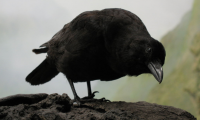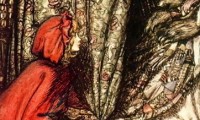CBS News Steve Hartman, “Female Dog Mothers Kittens” (Iowa Humane Society, 2008)
Where to begin writing about a subject that has haunted me for years, spinning out into countless harebrained theories and subsequent heated conversations with both indulgent strangers and obliging loved ones alike? It wouldn’t seem to be a subject of grave importance, yet I’m obsessed: what is responsible for the explosion of interest in cases of interspecies friendship, nurturing and solidarity on the interwebs since September 11, 2001?
For each story of platonic camaraderie and benevolence, there are numerous others detailing selfless new mothers generously nursing abandoned animals from other species. (Dogs seem to be particularly prone to maternal miscegenation, nursing anything they can get their paws on, apparently, as we can see here and here.)
The examples of world-famous interspecies bonds are endless, ranging from Owen and Mzee, the baby hippo and elderly tortoise that formed an intense trans-generational bond after being thrown together by the 2004 Tsunami, to the infamously counter-intuitive “tiger piglets.”
ITN, “Mother Tiger Adopts Piglets” (Sriracha Tiger Zoo, 2007)
Some might argue the proliferation of these stories, pictures and videos is simply a product of the rise of blogs and other social media dedicated to the subculture of cuteness. Others might see it as a crude marketing ploy by desperate zoos and animal welfare orgs who know that the sight of interspecies nuzzling and rescuing will attract much-needed attention and donations. Still others could ascribe it to the awesome power of the mother instinct, which drives animals to take care of other living creatures across species lines, or perhaps simply to confusion or ignorance among the parties involved. My theory proposes something far more sinister: These animals are involved in a propaganda campaign eerily coinciding with the War on Terror initiated after the 9/11 attacks.
A key element of the interspecies friendship genre—whether unstated or explicit—is a plea for tolerance, which (at best) takes a similar form to a Jerry Springer “Final Thought.” Basically it goes that if a cat and a crow – to take my favourite example – can become the best of friends, then surely we rational and civilized human beings can overcome our own differences and all “just get along.” As one fellow puts it, “Different species, getting along, cats and dogs, kittens and hamsters, paw in paw, living in perfect harmony, y’know?”
We are urged to find a valuable moral lesson for our own deeply flawed species in these kinships. The dangerous assumption is that, like these animal friends, it is merely differences of appearance that divide us human cultures—aren’t we all fauna, after all? — and not differences of culture, class and belief, which are arguably far more insurmountable.
By misleading us about the supposed ease of intercultural harmony while ignoring the knotty complexities of human history and its attendant systemic political and economic injustices, these animal friendship anecdotes could in fact be held responsible for worsening relations between human societies. (Keep in mind that the popularity of these stories has skyrocketed since the inauguration of the post-9/11 War on Terror…).
Whether the animals themselves are mere pawns or are actually the architects of this devious campaign is a subject for further investigation. Certainly they would benefit in the long-term from civilizational collapse, as the decimation of the human population would presumably decelerate the destruction of the Earth’s fragile ecosystems. That we in North America have a particularly sentimental relationship to animals would make them the idea Trojan Horses (if you will) for a potent, nay debilitating, misinformation program.
I therefore urge you to take heed and approach these ostensibly cute tales with the greatest caution.
ION Television, “Crow And Kitten Are Friends” (“Miracle Pets” 1999)
– Jon Davies









